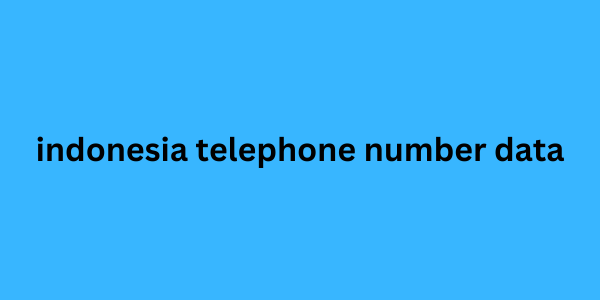What Does Google Safe Browsing Do?
Google Safe Browsing is a service developed for the safety of visitors that scans sites for malware, viruses, and other harmful software. Google Safe Browsing also decides whether sites appear in search results.
Google constantly scans sites to see if they are safe and immediately indonesia telephone number data warns users if there is malicious content. This way, visitors to the site can quickly prevent their devices from being infected.
The Google Safe Browsing system can also help site owners identify security vulnerabilities on their sites. They can constantly check the security of their sites using the Google Safe Browsing tool. It also works with the Google Transparency Report.
google-phishing-complaint
How Do I Scan the Site's Security?
Google has also brought the safe browsing feature with the transparency report. In this way, you can check the sites that are scanned by Google and seen as suspicious and check whether there is a certain penalty from Google before entering the sites. This is very simple to do, just log in to the Google Transparency Report site and enter the URL of the site. As a result of your search, a screen appears where you can see the current status from Google.
Remember that your site security is as important to SEO as it is to Google .
Google Transparency Report
What is the Google Transparency Report?
Google transparency report is a reporting system that summarizes data requests and responses given to data requests using various services by Google. Google transparency report is a system prepared to emphasize the importance Google gives to user privacy and security.
The Google transparency report shows the purpose or purposes for which users request data, the country from which the request originates, the type of data request, how quickly the requests are answered together, and the responses to users' requests. This report also provides various information about the privacy protection policies implemented by Google. Google continues to publish a transparency report every year.
What Should You Do After Malicious Site Detection?
Google bots may not always detect malicious sites. In these cases, Google can also act as a result of complaints made by users. When you come across sites that you are sure are malicious while browsing, there are complaint pages created by Google according to 2 different malicious attack styles. These are:
Report Malware
Report Phishing Alert
Report a Phishing Fault Alert
Let us explain these two different complaint systems so that you do not confuse them.
google-transparency-report
Malware Reporting System
The malware reporting system created by Google is a system that works by entering a URL and asking for brief information about the type of malware. If you have not found an attempt at a phishing technique but have come across a different malware, it is very important to report it to Google. If Google scans find malware, it will both result in ranking penalties and the reputation of the site will drop significantly because it will be shared with third parties.
Phishing Alert Reporting System
The phishing alert reporting system works a little differently. If you come across a phishing attempt on the site, you can go to this site created by Google and file a complaint. There is also a faulty phishing alert system provided by Google as a result of errors that may occur in the phishing alert reporting system.
Report Phishing Page
Faulty Phishing Alert Reporting System
The false phishing warning notification system is a system where you can indicate that your site is falsely called phishing in case of phishing warnings or falsely called phishing. If there is no such situation on your site but you are perceived as such by Google, you can use this panel to indicate to Google that your site has received a false phishing warning.

Faulty Pishing Warning
What Are Phishing Pages?
Phishing pages are fake sites designed to steal users' sensitive information. Sites designed for this type of phishing have certain characteristics. These are:
They are very similar to real websites.
It consists of a single page and has copied sites that could be phished.
They are designed like e-commerce sites, especially to receive credit card information.
Link extensions are designed to be as similar as possible to the actual websites.
